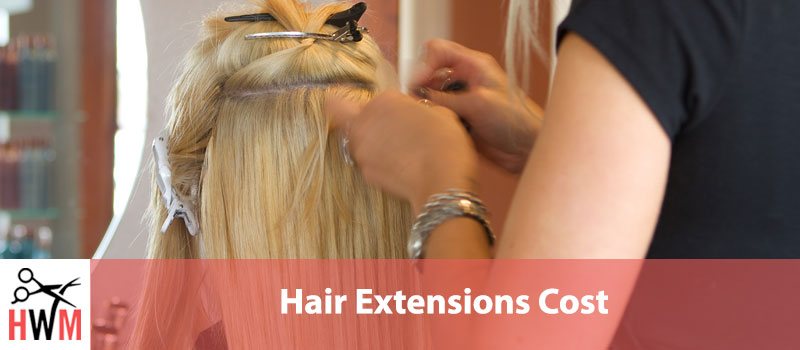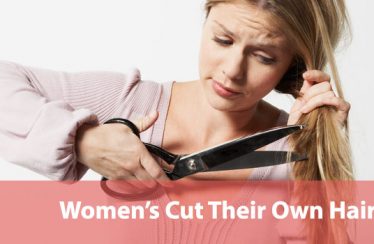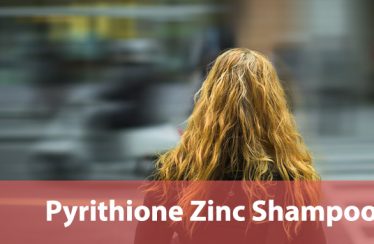Have you been trying to reverse hair loss? Were you born with thin hair? Have you always wanted thick, long tresses? If your answer to these questions is a ‘yes’ then hair extensions are perfect for you. Getting hair extensions, though, isn’t as simple as you may think. It requires a lot of investment, not only monetary but otherwise too.
Hair extensions not only need a lot of maintenance after you get them installed but require a considerable amount of money to get them installed in the first place. In fact, unless you were born with a silver spoon, the cost is going to be the deciding factor on which type of hair extensions you can get.
Therefore, before you over commit your finances, it is important to understand hair extensions costs in as much detail as possible. This is why we’ve created this guide. It covers everything you’ll ever need to know about hair extensions costs and all other related concerns. Here is an easy-to-click navigation panel that will give you an overview of all the information you’ll find on this page.
- Hair Extension Costs: Quick Glance
- An Overview of Hair Extension Costs
- Variables That Affect Hair Extension Costs
- Cost of Different Types of Hair Extensions
- Cost of Professional Installation of Hair Extensions
- Maintenance Cost of Hair Extensions
- How Can You Save Money While Getting Hair Extensions?
- Which Type of Hair Extensions Should You Get?
Hair Extension Costs: Quick Glance
| Hair Extension Type | Minimum to Maximum Range | Average Cost | Buying Cost | Installation Cost | Maintenance Cost |
|---|---|---|---|---|---|
| Clip-In Hair Extensions | $30 to $300 | $135 | $30 to $300 | NA | NA |
| Tape-In Hair Extensions | $300 to $500 | $400 | $200 to $300 | $100 to $200 | $0 to $150 |
| Glue-In Hair Extensions | $400 to $600 | $500 | $300 to $400 | $100 to $200 | $200 to $300 |
| Sew-In Hair Extensions | $500 to $800 | $650 | $300 to $400 | $200 to $400 | $100 to $200 |
| Microbead Hair Extensions | $400 to $1000 | $700 | $200 to $500 | $200 to $500 | $100 to $150 |
| Protein-Bonded Hair Extensions | $2500 to $4000 | $3250 | $2000 to 2500 | $500 to $1500 | $500 to $1000 |
An Overview of Hair Extension Costs
When it comes to hair extension costs, there’s a huge range to contend with. This means that you can get hair extensions for as low as $100 or as high as $3,000. Therefore, the wrong choice can either result in undue pressure on your finances or a distinct lack of quality or functionality in your hair extensions.
In terms of the national average, though, you should know that most Americans pay something between $200 to $600 for their hair extensions. The reason for this is that this is the range in which you get the best balance of cost vs. functionality or looks. If you try to operate below this range, then you save money but compromise on quality and comfort. On the other hand, if you go beyond this range, then you enter the world of luxury.
This should give you a rough idea of hair extensions costs in general. However, when it comes to how much you can expect to pay for getting your hair extensions, the above range may or may not apply. The reason for this is that the actual cost of hair extensions varies based on several different variables. As every individual is unique, these variables affect their total cost differently.
Variables That Affect Hair Extension Costs
If you’re planning to get hair extensions, the average cost of hair extensions is a good point to start. However, it is important that you keep it as the starting point only and aim for something more specific i.e. how much will you have to pay to get hair extensions.
To do this, you’ll have to focus on all the variables that affect the final cost of getting hair extensions. What are these variables? We’ve listed them below with details.
Type of Hair Used
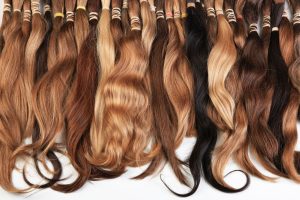
The cost of any product is based on the type of components or ingredients used to manufacture it. In the case of hair extensions, the primary component or ingredient is hair. As a result, the type of hair used in hair extensions will have the maximum impact on the cost when compared to all other variables.
Broadly speaking, hair extensions can be qualified into four categories based on the type of hair they use. These are synthetic hair, human hair, virgin human hair, and Remy human hair in ascending order of value.
The reason why synthetic hair is the most affordable of them all is that it can be artificially manufactured in large quantities. Synthetic hair is made up of plastic or polymers and designed to look like real hair. It also happens to be much less durable than human hair and impossible to style or color.
Extensions made with human hair are more expensive than extensions made with synthetic hair. These extensions are much more real-looking than synthetic hair extensions too. Further, they’re also slightly more versatile because they can be styled to a certain extent.
Even more natural-looking than plain human hair extensions are virgin hair extensions. This is why they’re more expensive. Another reason why virgin hair is more expensive is that it is directly obtained from the scalp of a donor and doesn’t go through any chemical processing. Plain human hair, in contrast, is heavily processed with chemicals.
The extent to which it is processed also determines its cost. The more chemical processing it goes through, the less expensive and durable it becomes. The least chemically processed human hair only goes through basic sanitation to sterilize it for the buyer. The most chemically processed human hair, however, is stripped of all its cuticles, which are then replaced by silicones.
Remy human hair is a step above virgin human hair. It is an upgrade on virgin human hair because Remy human hair strands are arranged in a way that all their cuticles point in a single direction. This arrangement not only makes Remy human hair extensions the most natural but also increases their life. Since Remy human hair extensions are made with the best type of hair, they’re the most expensive.
BrandValue
The hair extensions market is vast and diverse. It includes small-time factories that appear and disappear quickly as well as big-time suppliers fronted by high-profile brands.
The small-time factories, usually, operate near the bottom end of the hair extension cost spectrum while the big brands occupy the top end. While there’s no accountability in the way that the smaller players operate, the bigger players tend to have strict quality control systems in place. Further, sometimes the bigger brands also protect their customers through various warranties and guarantees.
The quality control and customer protection systems offered by bigger brands is the reason why their products are expensive. Therefore, whether you choose to buy your hair extensions from a small supplier or big brand will also have an effect on your final expenditure
Quantity of Hair Required
Along with quality, you’ll also have to take into account the quantity of hair you’ll need to determine how much you’ll have to pay. In general, you can assume that the longer or thicker you want your hair to be, the more you’ll have to pay.
However, it can be very difficult to analyze how many bundles you’ll end up needing. The reason for this is that there are certain exceptions to the aforementioned rules that only an experienced stylist will be able to judge.
For example, if a woman with short hair wants to get very long extensions then the quantity of hair required is much higher than if a woman with medium hair wants long extensions. The reason for this is that more hair extensions are needed to mask and cover short natural hair strands.
The best way to determine how many wefts or bundles you’ll need is to formally consult a stylist. During your consultation, the stylist will ask questions, make measurements, and tell you not only how many hair extensions you’ll need to pull off your desired look but also how much it will end up costing you.
Attachment Method Involved
The method through which hair extensions are attached to natural hair also needs to be considered if you’re trying to estimate how much you’ll be spending. After all, the effort that goes into their installation has value too.
The simpler the attachment method is, the more affordable the hair extensions will be. For instance, the simplest way of getting hair extensions is through clips i.e. clip-in hair extensions. Clip-in hair extensions are so easy to install that you can do it at home in a few minutes. This means that the installation cost component becomes zero in your total estimate of hair extensions cost.
The exact opposite of clip-in hair extensions is permanent hair extensions. They are not only difficult to install but also very time-consuming. Moreover, they can only be installed by an expert with a lot of experience. This means that if you choose to get permanent hair extensions, you’ll be paying experts for their time, effort, and expertise. This means considerable addition to the initial cost of buying hair extensions.
All other types of hair extensions can be placed at various points in the spectrum between clip-in hair extensions and permanent hair extensions. The installation cost varies from one attachment method to another.
Color of Hair Extensions
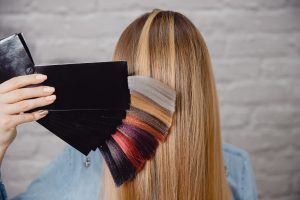
Colored hair extensions tend to be more expensive than plain black hair extensions. This is true, irrespective of whether the color you want is natural or artificial.
If you’re looking for natural colored hair extensions such as blonde, red, or brunette, you can expect to pay more than if you were buying black hair extensions.
Since there are more people with black hair in the world, it is easier to get black hair extensions. Moreover, all other natural hair colors are usually found in the western world where the cost of getting hair is higher. This means that a natural blonde hair strand is considerably more expensive than a black hair strand.
You can also choose to buy artificially colored hair extensions since they’ll be cheaper than natural color hair extensions. For instance, some suppliers sell hair extensions where the black hair has been bleached blonde.
While more costly than plain black hair extensions, this type of hair extension will be cheaper than natural color hair extensions. Moreover, there will be another price that you’ll have to pay. This is the fact that artificially colored hair extensions will have a shorter life than natural black or color hair extensions.
It is worth mentioning that you can always have your black hair extensions colored after you’ve bought them. It may turn out to be cheaper than buying artificially colored hair extensions but will still add to the total cost of your hair extensions.
You should note that to be able to do this, you’ll need to get, at least, virgin hair extensions. All qualities below that point such as basic human hair or synthetic hair cannot be colored easily.
Maintenance Costs
It would be a good idea to take into account the cost of maintaining hair extensions as well. The most advanced types of hair extensions require the most care and upkeep. For instance, some types of hair extensions will require you to visit the salon every month or so for maintenance and every visit will peg you back by $50 to $100.
Similarly, the most advanced hair extensions will require the utmost care at home too. They’ll be susceptible to mainstream hair products, which means that you’ll have to buy professional or salon-quality products. These products, as is natural, will be more expensive.
Cost of Different Types of Hair Extensions
The best hair extensions are made with human hair. Most women serious about adding length and volume to their hair tend to choose human hair extensions. Therefore, when it comes to hair extensions costs, the installation method takes precedence over the type of hair. In this section of this guide, we’ll look at the cost of each type of hair extensions one by one.
Clip-In Hair Extensions
Clip-in hair extensions are the simplest, oldest, and most affordable type of hair extensions you can choose to get. They’re, essentially, hair sections attached to clips on one end that you can attach to your natural hair.
Clip-ins are available in the market for as low as $30. If you really look hard, we’re sure you can find some really poor-quality clip-ins for $15. However, we don’t recommend getting those. In fact, we suggest you avoid them like the plague. These will be made with extremely low-quality, synthetic hair that will only be good for a few wears. Moreover, the look will be very artificial, and people will be able to tell that you’re wearing extensions.
The really best clip-ins, however, will cost about $300, but you can probably get a good balance of affordability and quality in the $150 range. At this range, you can get human hair extensions, but whether they’re Remy or not is debatable. The cost will also vary based on the country from where the human hair has been sourced.
In terms of installation, you’ll have to pay nothing since you can install them yourself. There are countless DIY videos on YouTube and other websites that you can use to learn various ways of installing clip-in hair extensions.
Of course, you can still go to a stylist if you’re planning to wear them on a special occasion. Regardless of how good you are, your skills will never be as good as a professional’s. So, if the occasion is important, we suggest visiting the local salon and getting your clip-ins installed for a one-time fee.
Maintenance of clip-in hair extensions is easy since you can remove them at the end of every day. To maintain them, you just need to wash and condition them after wearing them for 15 to 30 times. While you can’t use strong, mainstream shampoos and conditioners on them, you can use affordably-priced natural hair products.
Tape-In Hair Extensions
Tape-in hair extensions are the newest thing in the world of hair extensions. These types of hair extensions have extremely thin and light tapes at one end. They’re installed by removing the covering on the tape and pasting it on a section of the hair. The hair extensions are installed over an under individual natural hair segments for maximum hold and most natural appearance.
Despite being fairly new, tape-in hair extensions have become extremely popular because they offer great benefits at great prices. You can get tape-ins for anything between $200 to $500, with the latter being made with the bestquality hair. Of this total cost of getting tape-ins, you’ll be spending about $200 to $300 on buying the hair extensions.
In terms of installation costs, however, there is a lot of variation. The reason for this is that the installation procedure of tape-ins is simple enough for women to attempt it at home. If you choose this path, then you won’t be spending anything on their installation. At the same time, a single mistake can result in big problems.
For instance, if you paste an extension wrong, it can become very difficult to correct the mistake. This can only complicate the installation and add to the installation cost because you’ll end up visiting a stylist for corrections.
Instead, if you were to go to a stylist for installing tape-in hair extensions, you’ll be paying up to $200 based on the number of extensions you’re having installed. Also, remember that in addition to their operational expertise, this money will also get you their aesthetic expertise.
Maintaining tape-ins can be a little complicated since you’ll have to protect the adhesive on the tape. This means that you can only use premium-quality hair products. The hair products have to be very mild, gentle, and without harsh ingredients such as sulfates.
Glue-In Hair Extensions
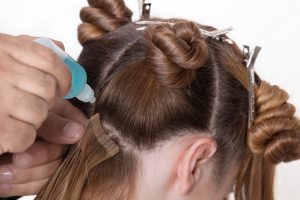
Glue-in hair extensions are installed in the hair with the help of an industrial-strength adhesive. The primary problem with this installation process is that it doesn’t suit women with very fine or thin hair.
Glued-in hair extensions can be seen as a precursor to tape-in hair extensions. In other words, tape-ins are the natural result of the technological advancement of glue-ins. Being slightly older, glue-ins are also slightly more expensive than tape-ins.
You’ll have to stump up anything between $300 to $500 to get glue-in hair extensions. Their installation costs are similar to tape-ins, with the exception that you shouldn’t be installing them yourself. As a result, you can expect to pay around $100 to $200 to get glue-ins installed.
They require considerably more care and maintenance than tape-ins as well. The reason for this is that certain ingredients in commonly used hair products can slowly degrade the adhesives used to attach glue-in hair extensions.
This means using extremely high-quality shampoos and conditioners. Moreover, it means using them very carefully and away from the point of attachment. Additionally, it means keeping buildup at bay because dust and grime can stick to the adhesives too. Maintaining glue-ins can cost anything from $200 up to $300.
Sew-In Hair Extensions
Sew-in hair extensions don’t use any type of adhesives. As is obvious by their name, these types of hair extensions are sewed into the natural hair. The process of attaching sew-in hair extensions is very elaborate, time-consuming, and effort-intensive.
It requires the stylist to first braid your hair and then carefully sew in the hair extensions onto those braids. The work is time-consuming and requires a lot of skill. This is why the installation cost of sew-ins is so high. A stylist will charge you approximately $200 to $400 to install sew-in hair extensions, while you’ll have to pay around $300 to $400 to buy them.
On the other hand, sew-in hair extensions are much easier to maintain than adhesive-based hair extensions. More importantly, they’re also more affordable in terms of their maintenance cost.
The main reason for this is that you don’t have to worry about protecting adhesives with these types of hair extensions. The only maintenance expense you’ll have to manage with sew-in hair extensions is the cost of visits to the salon for touchups. As a result, you’ll end up spending somewhere between $100 and $200 to maintain sew-in hair extensions.
Microbead Hair Extensions
Microbead hair extensions, like sew-in hair extensions, have a very effort and time-intensive installation procedure. It doesn’t even matter which type of microbead hair extensions you’re considering. All of them will require you to sit for a long time under the hands of the stylist. This includes beads, links, loops, and even rings.
After all, it takes a lot of concentration and effort to thread through thin sections of hair through such small holes. Microbead hair extensions cost can vary greatly on account of there being so many different varieties. The cheapest you can get will cost you a total of around $400, split equally between the purchase cost and the installation cost.
However, the more advanced or complicated ones can go up as high as $1000. For instance, there are microbead hair extensions featuring nano-sized beads that are installed through the sew-in method. These are not only more expensive to buy but also more expensive to install. The purchase cost and installation cost will again be similar.
The primary benefit of getting microbead hair extensions is that they’re very easy to maintain and can last a really long time. Some of them are even considered to be permanent hair extensions. They also don’t cost much to maintain. You can expect to spend approximately $100 to $150 to maintain these hair extensions.
Protein-Bonded Hair Extensions
In the majority of cases, when someone talks about permanent hair extensions, they’re referring to protein-bonded hair extensions. Also known as keratin-bonded or cold fusion hair extensions, these are the most expensive type of hair extensions.
To get protein-bonded hair extensions, you’ll have to pay anything between $2500 and $4000. The hair extensions, themselves, will cost around $2000 to $2500, while their installation will range from $500 to $1500. Naturally, the variation will depend on how many extensions you’re buying and having installed.
Even though protein-bonded hair extension costs are exorbitant, they’re more than justified. For instance, because these hair extensions don’t rely on chemical adhesives, they’re easier to maintain. In fact, maintaining these hair extensions only costs about $500 to $1000 depending on the quality you’ve chosen.
The real benefit of protein-bonded hair extensions is that they don’t damage the hair. Since the installation process doesn’t rely on heat to bond the extensions to natural hair, the hair remains safe and unaffected.
Cost of Professional Installation of Hair Extensions
In the case of most types of hair extensions, salon installation costs account for a major chunk of the total cost. However, you will only realize this if you try to calculate everything in advance. If you were to, for example, just buy hair extensions and have them installed, you won’t even realize how significant the salon costs are. There are two reasons for this.
The first is that when you buy hair extensions from a premium-level, professional salon the cost of its installation will be included in the initial purchase cost. The second reason for this is that you will forget to incorporate the cost of follow-ups into the total.
The reality is that the cost of professional installation will be almost as much as the cost of the initial purchase. However, don’t let his realization force you onto YouTube looking for DIY videos. While the cost of professional installation may be high, it is more than worth it.
The obvious benefit is convenience. Another is that you get to leverage the professional experience of expert stylists. After all, they’ll help you with everything from choosing the right look during the consultation to teaching you how to maintain your hair extensions. Moreover, nobody can blend hair extensions with natural hair, the way a professional stylist can.
Additionally, while installing your hair extensions yourself may be more affordable than professional installation, it isn’t completely free of cost. There are hidden costs involved.
The first is the purchase of the tools you’ll need to install the hair extensions. All types of hair extensions, even clip-ins, need specific tools to be installed properly. You will also need the right tools and hair products to be able to blend the hair extensions with your natural hair. You may even need to make color-based modifications to blend them properly.
Finally, if you don’t have experience installing hair extensions yourself, you’ll need to account for all the mistakes you’ll be making. If the mistakes are severe enough, you’ll need professional help to fix them.
Most women realize the risks of DIY hair extension installation, which is why they choose the professional option. In a nutshell, depending on the type of hair extension you’ve chosen, you can expect to spend anything between $50 to $2500 to get your hair extensions installed at a professional salon.
It isn’t just the type of hair extension that is responsible for the variation in cost, however. Other factors such as the location of the salon and the experience of the stylist in question also play a role. For instance, if you go to a branded salon in a major city, then you can expect to pay more than if you go to your local salon. Similarly, an expert stylist will charge you much more for the same service than a styling intern will.
Further, the more hair extensions you’re having installed, the more the salon will charge you. Installing 10 extensions will require more time and effort than installing just five.
The final outcome is also an important factor. For instance, your particular scenario may require the stylist to cut, style, or color your hair. You should keep in mind the fact that if the stylist doesn’t expect separate payment for these services, then the costs have already been incorporated into the total cost.
Maintenance Cost of Hair Extensions

The maintenance cost of hair extensions can be broken down into three different categories.
The first is touchups and repeat visits to the salon. Their cost is not included in the majority of hair extension packages. These service charges have to be paid separately and can be anything from $20 to $100 per visit.
The second component of maintenance cost is the re-use cost. It is possible to re-use hair extensions beyond their given lifespan. Usually, temporary hair extensions have a maximum life of six to eight weeks. After this period, they have to be removed and replaced. However, it is possible for them to be removed, processed, and re-used.
This, typically, involves trimming and some other treatments to bring their appearance up to the mark. Sometimes, the attachment mechanism may also need to be repaired or replaced such as the tapes in tape-ins or beads in microbead extensions. The cost of trimming and repairing hair extensions can be seen as re-use costs.
The third and final component of maintenance cost is at-home maintenance. Hair extensions need to be protected on an everyday basis. This means using the right hair products. If you’re getting hair extensions, you’ll need to change the way you take care of your hair.
Since you cannot use standard brushes and combs on hair extensions, you’ll be advised to get hair extension brushes. These are different because they have loops instead of bristles. This prevents them from catching, pulling, and damaging hair extensions.
Similarly, it is likely that you’ll have to change the shampoo, conditioner, gels, and masks that you’ve been using. Hair in hair extensions is very susceptible to aggressive, harsh ingredients such as sulfates, parabens, and phthalates amongst others. This means that you’ll have to buy milder, gentler, and more natural shampoos and conditioners.
Moreover, most types of hair extensions are also susceptible to excessive conditioning. Too much moisture or grease in the hair can cause them to slip and slide below their attached point. This means that you’ll have to give up heavy-duty conditioners, masks, and, gels.
Generally speaking, the cost of hair products suitable for hair extensions tends to be more than the cost of mainstream hair products used by most women. Therefore, these must be taken into account if you’re trying to evaluate hair extensions costs.
How Can You Save Money While Getting Hair Extensions?
Hair extensions are an investment but that doesn’t mean that you can’t save money on them. In fact, there are three different ways through which you can save money while paying for hair extensions.
The obvious is to channel everything through your salon or stylist. This will be slightly more expensive in the long run but will offer multiple convenient benefits in the short term. For one, you’re more likely to get a full package with guarantees from the salon. They may even take responsibility for how you end up looking. These safety nets can be great to rely on for first-timers.
Moreover, many premium-level, professional salons offer payment plans. These plans can be very beneficial if you want to get the more expensive hair extensions but don’t have cash for straight-up payment. With these plans, you can pay installments spanning across multiple months. While you’ll end up paying more in the long-term, you’ll save money in the short-term and protect your liquidity.
Another way is to buy your hair extensions from a wholesale supplier and getting them installed from a professional stylist. Wholesalers will always be willing to sell hair extensions at lower prices. If you can find a supplier who supplies bigger brands, then you’ll get excellent quality at excellent prices.
The final method of saving money while getting hair extensions is to get the stylist to work with you on the side. Stylists are employed by the salons and get a monthly salary. What you pay for the installation of your hair extensions, however, goes directly to the salon. If you have a good equation with your stylist, you can get him or her to work with you on the side. This way you can get a massive discount because the stylist will be pocketing the entire amount you pay.
Which Type of Hair Extensions Should You Get?

Let’s be honest here. The type of hair extension you’ll end up choosing will mostly be governed by your financial reach first. If you’re extremely short financially, then you won’t be able to think beyond clip-in hair extensions. On the other hand, if you’re flush with money, then you shouldn’t think of anything less than permanent hair extensions.
Most women, however, operate in the middle segment i.e. they have much more than what is required for clip-in hair extensions but not enough to throw away on permanent hair extensions. For these women, the decision-making process is very difficult because they have to strike a fine balance between the specific properties of all the different types of hair extensions.
To attain this fine balance, you’ll need to know more about the different types of hair extensions than just cost. The following quick pros and cons of each type of hair extensions are designed to give you this knowledge.
Pros and Cons of Clip-In Hair Extensions
As mentioned, clip-in hair extensions are great for women with severe financial constraints. At the same time, they’re an excellent choice for starters, especially since they allow for unrestricted experimentation. You can buy multiple colors or lengths and experiment with your look to your heart’s content if you go for clip-ins.
Further, clip-in hair extensions can be worn and taken off daily which allows natural hair the space it needs to breathe. Their temporariness may be one of their qualities but it is also one of their greatest flaws because you cannot wear them overnight.
Clip-ins are also a little more difficult to hide. For instance, these hair extensions may not be suitable for women with short hair.
Pros and Cons of Tape-In Hair Extensions
Tape-in hair extensions are the easiest and fastest to apply of all semi-permanent hair extensions, requiring only about 60 to 90 minutes. However, the flipside of that benefit is that it requires up to 48 hours to be fully in place, during which period the hair cannot be washed.
It is also very convenient to wear and fairly suitable for women with fine or thin hair. While it doesn’t cau any undue stress on the hair or the scalp, it does restrict certain activities. This means that if you have a very sporty lifestyle, these hair extensions may not be right for you. Tape-in hair extensions are also not very conducive to greasy hair products.
Pros and Cons of Glue-In Hair Extensions
Glue-in hair extensions, like tape-ins, cannot handle heavy-duty moisturizers and conditioners either. This makes them less suitable people with dry hair.
Unlike tape-ins, though, glue-ins aren’t really suitable for women with thin or fine hair. They will either come off or become too visible when installed on very fine hair. On the other hand, they’re a great option for women with thick hair.
Glue-ins are a more obsolete form of tape-ins. In fact, tape-ins have all but replaced them in the new millennium. There’s no real reason for you to choose glue-ins over tape-ins since they’re similarly priced and offer more benefits.
Pros and Cons of Sew-In Hair Extensions
Sew-in hair extensions can handle heavy-duty moisturization very well which is why they’re the best choice for women with extremely dry natural hair. They’re able to do this because they don’t rely on adhesives to stay in place.
They’re also an excellent choice for women with short hair. They allow the short hair strands to hide well while simultaneously offering the perfect stage for the installation of the hair extensions.
On the other hand, these hair extensions may not be the best option for women with fine hair. Fine hair is rarely able to handle the weight of the hair extensions. The braiding, itself, can end up bothering women with very sensitive scalp because it is tight and has weight.
The biggest flaw of sew-in hair extensions is that they need to be kept clean. If the braids become dirty and damp, then they could promote infection that can affect the entire scalp.
Also, sew-in hair extensions may not be a great choice for you if you like to change your hairstyle frequently. The braids can limit the number of options available to you since they’re more difficult to hide than the attachment points of other types of hair extensions.
Pros and Cons of Microbead Hair Extensions
Microbead hair extensions are also not suitable for women with fine hair either. The reason is the same too i.e. fine hair is brittle and can break under stress. However, while sew-in hair extensions are great for women with short hair, microbead hair extensions are not. The main reason for this is that it is very difficult to hide the microbeads in shorter hair.
Microbead hair extensions trump sew-ins when it comes to ease of maintenance, though. They’re significantly easier to wash than sew-ins since the microbeads don’t interfere or restrict the washing in any way.
Pros and Cons of Protein-Bonded Hair Extensions
If you’re not short on funds and are looking for the most long-lasting, least work-intensive option, then protein-bonded hair extensions will be perfect for you. These hair extensions are also a favorite of women who are particularly fussy about how natural their hair looks.
Of all the different types of hair extensions, these offer the most natural outcome. There are two reasons for this. The first is that the protein – keratin – dries clear and is all but impossible to spot. The other is that the attachment point is very close to the roots. Its location, however, can cause temporary irritation and headaches.
Contents
- Hair Extension Costs: Quick Glance
- An Overview of Hair Extension Costs
- Variables That Affect Hair Extension Costs
- Cost of Different Types of Hair Extensions
- Cost of Professional Installation of Hair Extensions
- Maintenance Cost of Hair Extensions
- How Can You Save Money While Getting Hair Extensions?
- Which Type of Hair Extensions Should You Get?
